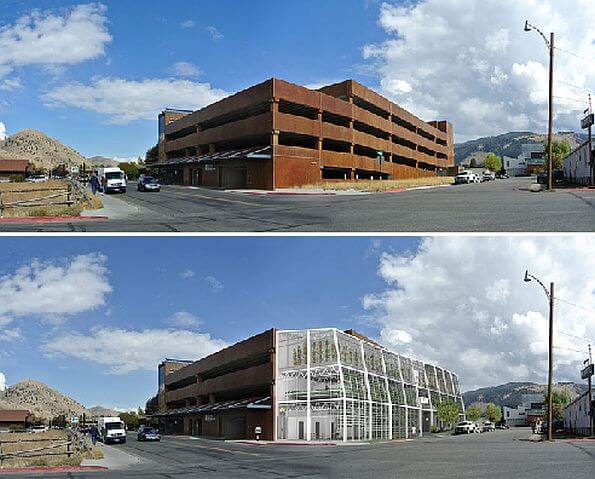Joshua Krause ~ While Wyoming is a very rural state with a rich agricultural history, it’s not exactly a breadbasket. Between the high elevation and the long winters, growing food is quite a challenge. Despite being the least populated state in America, and having more land than you can shake a stick at, they still have to import food for much of the year.
That’s why several residents from Jackson, Wyoming decided to build a massive vertical greenhouse in their downtown area. After running a successful Kickstarter campaign, and receiving a grant from the state, they’re set to open their facility by the end of the year.
The structure will be built along the side of a parking garage, and only take up about 1/10th of an acre. They’ll be using hydroponics to cut down on water usage, and they’ve created a unique carousel system to rotate their crops throughout the day, allowing each plant to receive plenty of sunlight in a limited space. Despite the energy needed to run the carousel, it will probably save electricity that would have been spent on UV lights.
All told, these methods are expected grow 100,000 lbs of fresh produce every year. According to their website, this will be the equivalent of growing on 5 acres using traditional (i.e. big agra) farming techniques. When it’s finished, it’ll look something like this.

You may be wondering what this has to do with prepping. After all, most people don’t have the resources or connections to build such a project.
What’s important to take from this, is that as preppers, we do what we do because the society we live in has a serious lack of preparedness. We know our communities and most of our neighbors will never take the time and energy to make themselves self-sufficient by any measure. It’s up to us do that on an individual basis.
This vertical farm is what community wide preparedness would look like. If our society was serious about sustainability, and reluctant to rely on an aging and vulnerable infrastructure for its needs, greenhouses like this would be everywhere.
Joshua Krause was born and raised in the Bay Area. He is a writer and researcher focused on principles of self-sufficiency and liberty at Ready Nutrition. You can follow Joshua’s work at our Facebook page or on his personal Twitter. Joshua’s website is Strange Danger
SF Source Ready Nutrition Mar 17 2015
